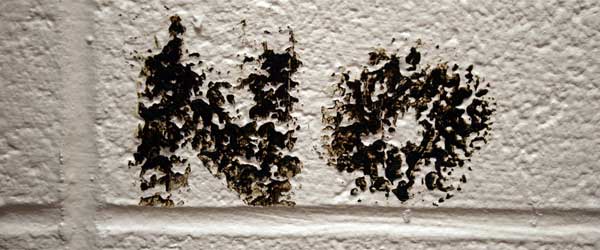We all know science can be complicated and messy—but does it have to be?
Can we find ways to simplify our science to become more effective researchers?
Perhaps we could simplify our experiments and approaches to allow us to learn more and help make things easier and cheaper too!
Read on to discover how embracing simplicity can make you a more effective researcher while reducing your workload.
3 Ways to Simplify Your Approach and Become a More Effective Researcher
1. Choose a Simple Model Organism
As a researcher, it can initially seem enticing to want to use a cool and complex model organism, but these models may have pitfalls.
A recent review highlighted some of the newer, emerging model organisms that researchers are turning to help solve unanswered questions in biology. [1] It also touched on some of the downsides to more complex models—pointing out that having a sequenced genome and an established method to propagate these organisms in the lab reliably is key to pushing knowledge forward. [1]
Of course, this all depends on what you are trying to achieve; but it’s essential to bear in mind that picking the simplest model organism that meets your needs can make it easier to get results. And who doesn’t want to make getting results easier?
How Yeast Led Sir Paul Nurse to a Nobel Prize
In episode #36 of The Microscopists, Nobel Prize winner Sir Paul Nurse spoke about his work on the fission yeast, Schizosaccharomyces pombe, a single-celled eukaryote, where he discovered the major Cyclin-dependent kinase (CDK1/cdc2) and its essential role in the cell cycle. [2]
While people question why he was bothering to work with yeast rather than more complex mammalian systems, he is quick to point out that over the last 20 years, researchers working on yeast have won no less than four Nobel prizes. He also highlights the ability to perform elegant experiments with great precision and reliability while working with yeast. Conversely, he describes how working with mammalian cells can be much more difficult.
I’ve experienced this in my career as a lab-based microbiologist working on bacteria. I studied a domesticated lab strain of E. coli during my PhD, which was incredibly easy to genetically manipulate to understand how the production of a specific small molecule was regulated as it grows. Towards the end of my work, we were able to apply what we had learned to some more clinically relevant strains of E. coli isolated straight from patient samples at the local hospital.
The same is true with my post-doctoral research, where I currently work with the non-pathogenic Gram-positive model organism B. subtilis.
Many years of research have made it easy to manipulate genetically. [3] We are trying to understand the first principles of unregulated DNA replication and then expand to ask how well this is conserved in other Gram-positive bacteria, including the notable global pathogen S. aureus.
We hope that this will one day help us identify novel antibiotic targets in S. aureus, which is responsible for most of the death arising from antimicrobial resistance worldwide. [4]
2. Choose the Right Experimental Technique
The newest and fanciest techniques can be very appealing to researchers, and you may think that they can help boost your research impact. However, there are clear reasons why these may not always be the best options.
Specific advantages of opting for more straightforward techniques are that you can:
- save money;
- save time;
- get access to equipment more readily;
- perform easier data analysis;
- have fewer data to analyze;
- have easier access to troubleshooting information.
Why Professor Claire Brown Recommends Simpler Techniques
Professor Claire Brown, Director of the Advanced BioImaging Facility at McGill University, highlighted the benefits of opting for simpler technologies in her recent interview for The Microscopists.
She spoke about her passion for trying to pull people back to the more basic technologies. This approach is particularly relevant to microscopy experiments, where the most advanced techniques can often accumulate vast volumes of data.
Take a recent example from my work in the lab, where a single experiment required three different fluorescence channels, taking images across four different strains of bacteria at three different time points. Each acquired image was about 8000 kb in size, so this single experiment generated 288 MB. This may not seem like a considerable amount of data, but it can quickly add up, especially if you use more advanced techniques.
Peter O’Toole, host of The Microscopists podcasts, also points out that using a more uncomplicated technique can be faster and cheaper while still providing the same (or even better!) scientific data.
However, Professor Brown was keen to stress that if the fanciest, newest technique is the right one for addressing a particular question, she does her best to help researchers use this.
3. Work Smarter, Not Harder
As researchers, we are always keen to feel productive and busy in the lab. However, perhaps we can improve our effectiveness by performing fewer experiments overall. It may seem counter-intuitive, but working smarter—not harder—can really pay off by taking the time to do experiments RIGHT!
Perform Fewer Experiments and Get Better Results
Here are some fundamental approaches to consider when performing fewer experiments:
- Do the right background reading beforehand and ensure the technique is correct for the question you are trying to address.
- Ensure you have all the necessary controls to analyze and interpret your data.
- Do a pilot experiment. Before launching into the experiment, a smaller-scale test can help identify and address any teething problems early on and let you deal with them before starting it.
- Go slowly and carefully so you don’t introduce mistakes, and the results are valid. This approach should ensure less need to ‘repeat’ to get publication-quality images and the like. Of course, it’s crucial to repeat enough to have statistical confidence in your data!
- Take the time to stop and think when things go wrong rather than just doing it again and again.
Adopting these approaches saves you time and money and can also help you reduce the impact of your research on the environment.
Closing Thought on Becoming a More Effective Researcher
Ockham’s Razor states that simplicity is a scientific virtue—and embracing simplicity in science, it seems, can sometimes really help you become an effective researcher.
I hope this article has given you pause for thought when designing future experiments and thinking about what techniques and approaches to use in your research. I expect this will save you time at the lab bench and when doing data analysis afterward—and save your lab money too!
References
- Goldstein B and N King (2016) The Future of Cell Biology: Emerging Model Organisms. Trends Cell Biol 26:818-824.
- Nurse P (1990) Universal control mechanism regulating onset of M-phase. Nature 344:503-508.
- Errington J and Van der Aart L (2020) Microbe Profile: Bacillus subtilis: model organism for cellular development, and industrial workhorse. Microbiology 166:425-427.
- Murray C et al (2022) Global burden of bacterial antimicrobial resistance in 2019: a systematic analysis. The Lancet 399:629-655.






